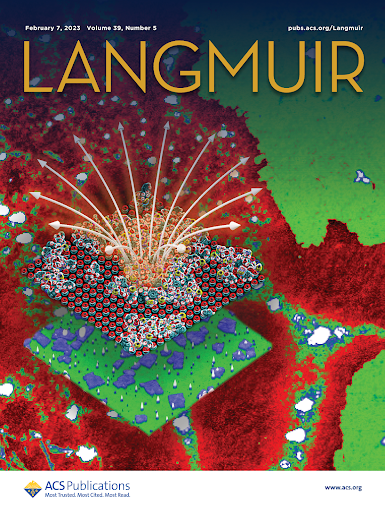The research team comprised a doctoral student Hadi Hematian, Dr. Egor Ukraintsev and Prof. Bohuslav Rezek, who was leading the team. Their work investigates by microscopic experiments and theoretical simulations how thiorphan, a small molecule with important biological roles, behaves when in contact with zinc oxide (ZnO), which is specifically used in drug delivery and theranostic applications. Although thiorphan has an important function as an inhibitor of zinc-ectoenzyme involved in the nervous system, its interactions with ZnO nanomaterials have not yet been sufficiently investigated.
In their work, the researcher team focused specifically on how the surface polarities of different ZnO crystallographic facets affect adsorption and assembly of thiorphan molecules. Polar ZnO surfaces cause the formation of thiorphan nanodots, where the size of the nanodots depends on the direction of dipoles. Nonpolar ZnO surfaces, on the other hand, cause spontaneous assembly into rigid nanosheets. The results show that this self-assembly is governed by the effect of the orientation and magnitude of the surface electric dipole, while the effects of surface chemistry or solution are negligible.
In a broader perspective, the different ZnO surfaces can be thus suitable for different applications. For instance, the O-face ZnO surface can be the most useful for biosensing, biointerfaces, or drug delivery, where the amount of adsorbed molecules needs to be maximized, but at the same time the sensor chemistry and structure of the molecules are not affected.On the other hand, the (1010) ZnO surface may be the best choice when oriented molecules with oriented dipoles and maximum chemical interactions with the sensor surface are necessary to enhance the sensor response. In addition, the observed rigid molecular layers with well-defined self-limited nanometer thickness can be considered as an example of novel ultrathin two-dimensional (2D) molecular nanomaterials. The controlled self-assembly of thiorphan molecules by ZnO surface dipole orientation and magnitude seems to be a more general effect applicable also to other molecules and surfaces. Thereby, the present study opens a new field of research and applications.
Prof. Rezek and his team continue to pursue this direction in upcoming projects and they take advantage of the obtained knowledge and newly established research methodology in their further research work on molecular-semiconductor interfaces, including internship of Hadi Hematian with Stuart Parkin in Max Planck Institute of Microstructure Physics in Halle, Germany.
Foto: Langmuir


